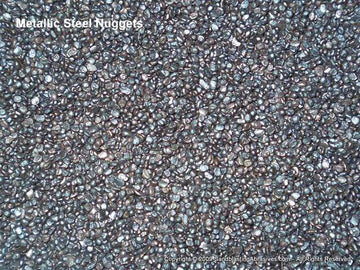Sort + Filter
Mon-crystalline Synthetic (man made) Diamond lapping powders are available in many different sizes, in both Resin bond and Metal bond. Resin bond diamond powders are also available with copper or nickel coatings. Poly-crystalline powders are also available, see below. Request A Quote Now
Monocrystalline Diamond Powders:
Lapping and Polishing, Metal Etching:
Both Resin and Metal bond monocrystalline diamonds are popular abrasives to use for lapping and polishing. They can be made into a slurry (used with oil, glycol and water based vehicles) for lapping and polishing such as with sapphire, carbides, and ceramics. Metal bond diamonds are harder than Resin bond diamonds, but both diamond types can be used in a water based slurry for ultrasonic processes. The Metal Bond synthetic diamond is in general, a better material than Resin bond because is more tightly graded, as well as being harder. Metal bond diamond is also often used to etch metal, and are becoming popular (due to cost efficiency) in wire saw cutting applications of very hard materials such as sapphire and silicon carbide.
Color:
The Metal Bond has a greenish to yellowish color: the Resin Bond is more of a beige color.
Sizing:
The resin and metal bond system diamonds are available in a variety of grades and sizes, see chart below.
Hardness & Friability:
- Resin Bond Diamond powders have medium hardhess and friability.
- Metal Bond Diamond powders are harder and tougher than resin bond diamond powders, and are made for use in metal bond diamond wheels for grinding of Quartz, Ceramics, Sapphires and other hard materials.
Technical data
| Appearance (dry state): | Color | Resin Bond – Gray, Metal Bond - Yellow |
| Chemical composition: | Carbon | up to 99% |
| Physical data: | Atomic Number | 12.0111 |
| Hardness | 10,000 kg/mm2 | |
| Mohs Hardness @20°C | 10 | |
| Density | 3.52 g/cm3 | |
| Oxidation temperature in the open atmosphere at heating rate 50°F/min.: |
1,790°F (977°C) | |
| Boiling Point (°C) | 4827 deg.C | |
| Thermal Conductivity | 20 W/cm-K | |
| Specific Heat @ 25 deg.C | 0.165 cal/g | |
| Thermal Expansion Coefficient | 0.0000011/K | |
| Dielectric Strengh: | 10,000,000 V/cm | |
| Crystallography | hexagonal |
Product Availability & Application Reference Chart
Our stock inventory, with the reference to the process, is listed below. Other grades and sizes are also available.
|
Process |
Grade No. |
US Standard Micron Range |
Mesh Sizes |
|
Polishing |
1/4 |
0-1/2 |
60,000 |
|
|
1/2 |
0-1 |
25,000 |
|
|
1 |
0-2 |
10,000 |
|
|
2 |
1-3 |
9,000 |
|
|
3 |
2-4 |
8,500 |
|
|
4 |
2-6 |
6,000 |
|
|
6 |
4-8 |
3,000 |
|
|
|||
|
Lapping |
9 |
6-12 |
1,800 |
|
|
12 |
8-15 |
1,500 |
|
|
15 |
10-20 |
1,200 |
|
|
17 |
15-20 |
1,100 |
|
|
20 |
15-25 |
1,000 |
|
|
25 |
20-30 |
880 |
|
|
30 |
22-36 |
600 |
|
|
35 |
30-40 |
500 |
|
|
45 |
36-54 |
450 |
|
|
|
|
|
|
Grinding |
400 |
35/45 |
325/400 |
|
|
320 |
45/53 |
270/325 |
|
|
240 |
53/63 |
230/270 |
|
|
220 |
63/75 |
200/230 |
|
|
180 |
75/90 |
170/200 |
|
|
150 |
90/106 |
140/170 |
|
|
120 |
106/125 |
120/140 |
|
|
110 |
125/150 |
100/120 |
|
|
105 |
150/180 |
80/100 |
|
|
100 |
180/250 |
60/80 |
|
|
60 |
250/300 |
50/60 |
|
|
46 |
300/425 |
40/50 |
Note: Nickel and Copper coatings are available per request.
_____________________________________________________
Polycrystalline Diamond Powders:
Synthetic polycrystalline diamonds are produced using and short and powerful explosions. This results in polycrystalline diamond crystals - each consisting of thousands of micro crystallites bonded together.
These polycrystalline diamonds are the only type of the diamonds that have self-sharpening properties! The polycrystalline structure will continually break down, releasing the outer layer of dulled micro crystallites, thus revealing underlying, new, sharp edges. Polycrystalline diamonds can lap and polish faster than any other abrasive, all while producing the smoothest, scratch free surface possible.
Advantages of Polycrystalline Diamond:
- High removal rate, higher and faster than monocrystalline diamond powders.
- Superior finishes due to less subsurface damage from the micro crystals (vs a single mono crystal).
- Economics. 10 um diamond particles will continually break down, decreasing in size to 1 um. This allows the operator to achieve a complete polish without changing the diamond size.
Best Uses of Poly Diamond:
- Lapping and polishing of hard metals, their alloys, ceramics, including ferrites and silicon
- Sapphire & Gemstone Polishing - including diamonds themselves.
- GMR head polishing
Polycrystalline Diamond Technical Data
| Appearance (dry state): | Color | Gray |
| Chemical composition: | Carbon | 99% |
| Hydrogen | <1% | |
| Nitrogen | <1% | |
| Oxygen | <1% | |
| Physical data: | Particle sizes available | 0.05-0.15; 0.05-0.2; 0-0.25; 0-0.5; 0.5-1.0; 0-1.0; 0.5-1.5; 1-2; 0-2; 1-3; 0-10 um. |
| Specific gravity: | 3.451 | |
| Friability index: | 75-80% | |
| Structure: | polycrystalline, with the crystal size 5-7 nm | |
| Decomposition | decomposes with a heat over 500°C | |
| Electrical conductivity: | non-conductive |












